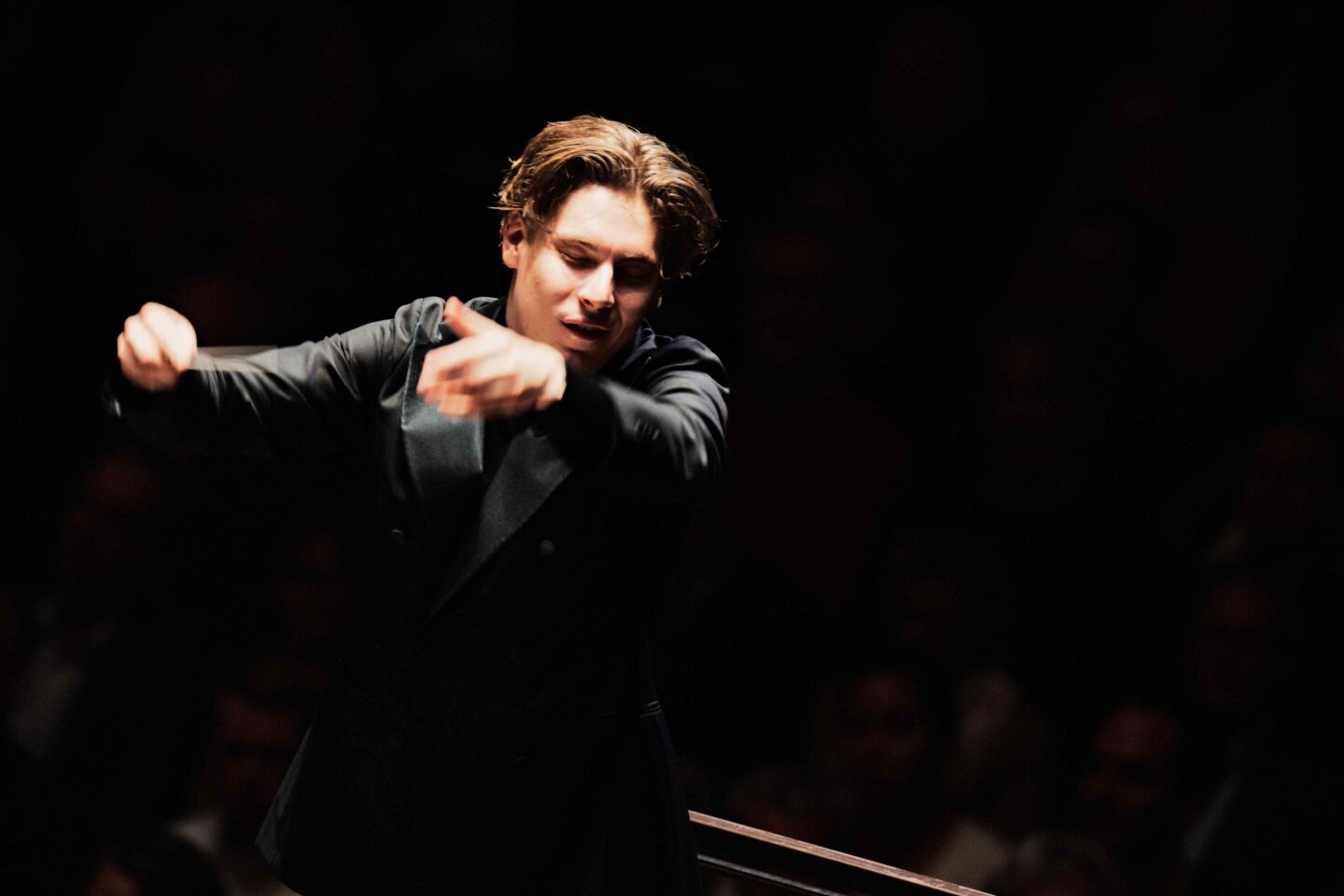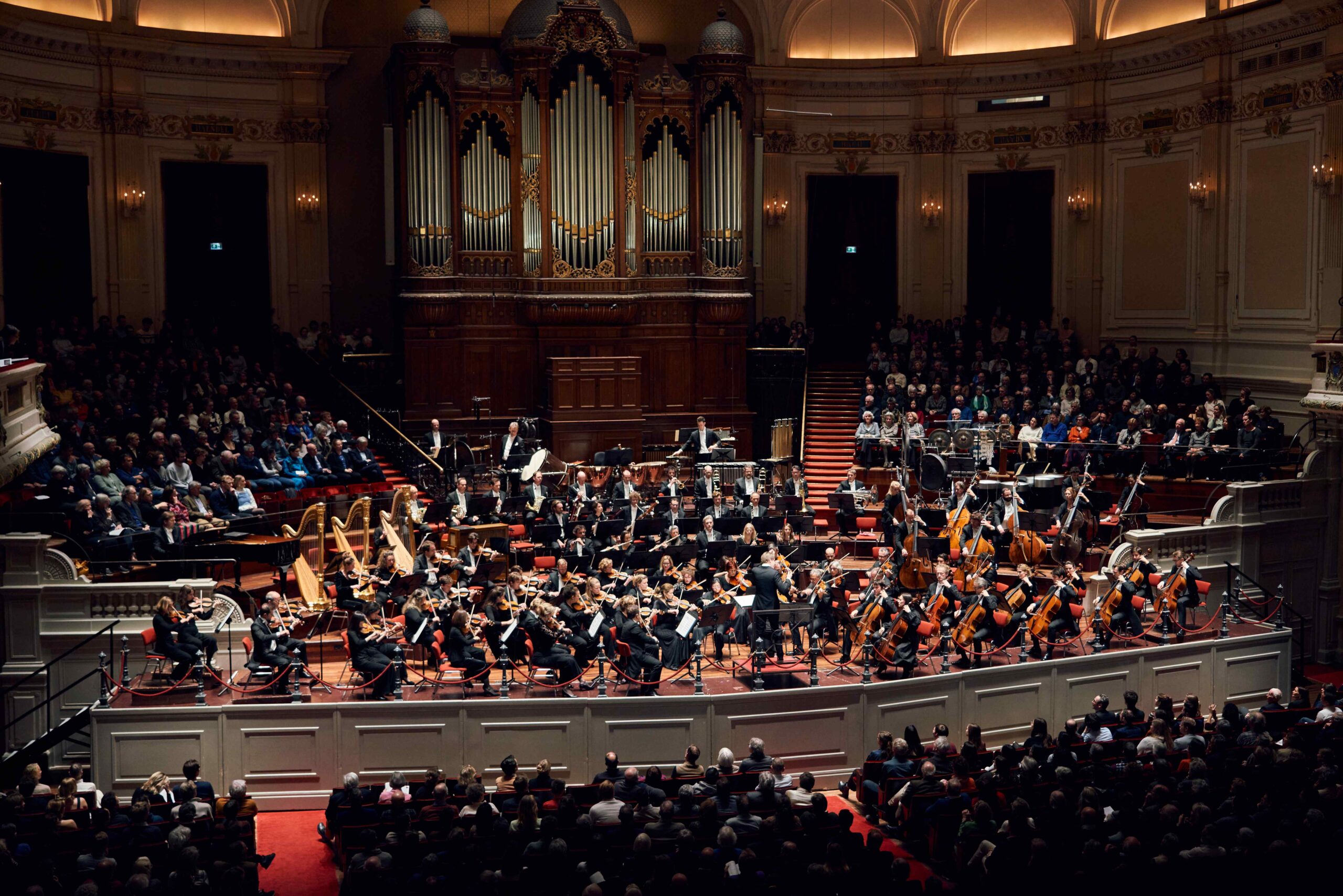“Music can name the unnamable and communicate the unknowable” (Leonard Bernstein)
When Wilhelm Furtwängler described Bruckner as a “Gothic mystic lost in the 19th century,” he was certainly referring to his Symphony No. 5 from 1878, often likened to a sonic cathedral, with its counterpoints seen as a musical response to the Baroque churches of Upper Austria. This monumental work has long been performed as an act of faith, a majestic and solemn ceremony. Others have seen it as “a wordless initiatory drama.” That, at least, was written at its premiere at the Gewandhaus in 1899. Harnoncourt, on the other hand, described the rhythm of this work in colorful and amusing terms: “it’s Bruckner walking in nature, with mud sticking to his shoes.” This goes to show how the profound meaning of this symphony has been interpreted differently over more than a century. A rich, polysemic work, infinitely open to questioning – in short, the hallmark of a masterpiece – this Fifth Symphony emerges in many respects as one of the peaks of Bruckner’s art. But having said that, are we not perpetuating clichés? Let’s hear from Bruckner himself, who referred to his work as Phantastische (“Fantastic”), revealing not only his admiration for the great symphonic works of his predecessors but also his desire to inscribe his music in a tradition of emotional expression stemming from German Romanticism and Hector Berlioz’s harmonic innovations. It is precisely from this qualification that Klaus Mäkelä forged his vision of the work with the Royal Concertgebouw Orchestra of Amsterdam, already fully committed to their future “chief conductor,” a prodigious conductor.

It all begins with the double bass pizzicato, moments that show Wagnerian reminiscences… Silence, concentration. This is how the Adagio opens. The conductor’s gestures, as usual, are expansive and dance-like, slightly bouncing, with a sense of legato, yet quickly exploring the discontinuities of Bruckner’s discourse: one feels that this Bruckner is the heir of Schubert’s Ninth, taken up in theme and variation. There’s even a quote from the Rheingold theme, pastiche or parody… yes, Mäkelä offers an Apollonian interpretation, I would even say a Mercurian one: lively, dynamic, with a jovial and communicative discourse, it’s quicksilver, in a skipping and bounding style, resolutely abandoning the supposed mystical keystone that we had become accustomed to hearing in Bruckner for years (although Harnoncourt had already contributed to finally lightening the Master of Saint Florian). This Bruckner leans towards Schumann, in his wanderings, his errancies, his vertigoes: that’s precisely the “fantastic” aspect of Bruckner: like so many episodes from the life of an artist, disappointed loves, fallen loves, disappointments that parade, in a sort of exploration, a playful homage to the masters who nurtured his art. Despite some approximations in the horns and trombones, in the attacks, the thematic discontinuities of this first movement, the abrupt stops, the aggression, the changes of tone, the violence, alongside the whimsical wandering of a disillusioned wanderer, have never been rendered better. In this approach, it’s effective, revealing, and refreshing.
The second movement confirms that the oboe’s song is the symmetrical counterpart of the oboe’s song in the second movement of Schubert’s Ninth. But above all, one sometimes hears Beethoven’s Ninth, the explicit acknowledged model for this Fifth Symphony. There’s always something dance-like about Mäkelä, and sometimes in his gestures and his smile, he recalls Mariss Jansons, but the comparisons end there. Mäkelä already has a unique style: there’s a dynamism, a rhythmic body to all the music, beautiful moments of suspended time, a symphony of double bass pizzicato, something smiling, at least a clear refusal of all dolorism, all pathos. We’re in a more earthly Bruckner, with some moments of slowness, very beautiful passages, fragments of suspended time. It remains uneven in this movement, but we learn a lot: Mäkelä has a sense of clarity and pedagogical simplicity. It’s exciting, never boring.
Undoubtedly, the third movement is a fascinating moment. We are firmly in Austrian, folkloric, earthly, jovial dance, deliberately clumsy, juxtaposed with the most morbid anguish. The mixture of the grotesque and the sublime in short. This Bruckner throbs, whirls, twirls, like a will-o’-the-wisp, heralding Mahlerian sarcasms. These passages have never been heard played so amiably, lightly, Mozartianly, gracefully, with amusing flutes. And suddenly, the race to the abyss resumes, tug-of-war, anxieties, vertigos. Yes, this symphony, the daughter of Berlioz and Schumann, directly announces the mocking accents of Gustav Mahler’s First Symphony. A true German romanticism, a turmoil, but also a modern spirit, combining grace, freshness, and amusement. In short, a fantasy in the manner of Rembrandt and Callot. Isn’t it already a decadent Vienna that we are given to hear?
The fourth movement confirms all the qualities of this interpretation: the same mocking clarinets, a distanced, almost parodic reading, a Bruckner where something is always happening, a bouncing, smiling conductor. This mischievousness might annoy the guardians of the temple and all those who would have defended a Bruckner smelling of incense fumes. But yet it’s a defensible option and undoubtedly the most just option, giving this work its exact place between the Fourth Symphony, subtitled “Romantic,” and the Sixth, aptly named and affectionately dubbed by Bruckner himself, his “saucy” one. It’s the prelude to audacity and insolence here, and everything culminates in a chorale heralding the final movement of Mahler’s Seventh.
So, in the end, everything has been said about this Fifth Symphony, and especially clichés. Sonic cathedral, mystical, reflection of the profound faith of a fervent believer… But tonight, Bruckner is finally returned to his audacity and capricious temperament, undoubtedly repressed in real life, but bursting forth here, bounding in his music. Yes: a capricious symphony… Capricious and insolent, with its blend of seriousness, high contrapuntal technique, juxtaposing folk dances of its native Austria with soaring and fervent moments. A Bruckner dusted off by a young 28-year-old conductor, who has restored Bruckner to his rightful place as a continuator of Berlioz, a distant romantic, a music lover, a hedonist. For some, a fascinating misunderstanding. For others, an exciting experience. In any case, an unprecedented, jovial prelude. And the triumph reserved for the conductor, a harbinger of a very brilliant career at the head of an Orchestra eagerly awaiting 2027 to experience moments as fascinating and brilliant as this evening.
Philippe Rosset
May 3, 2024


